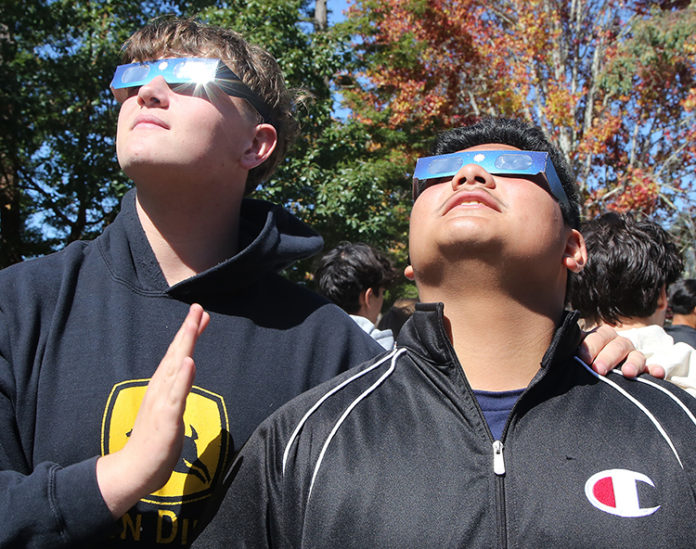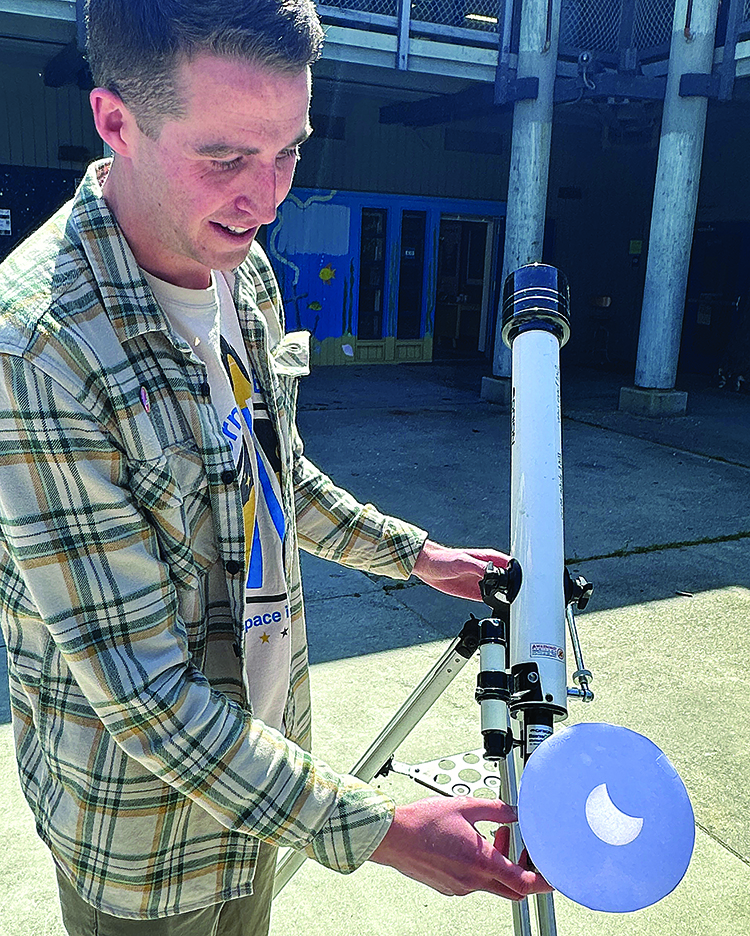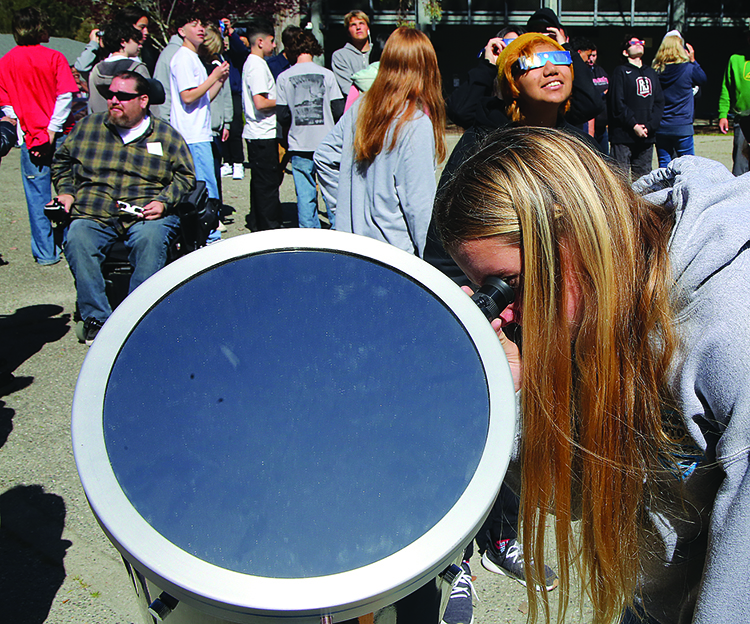
Thousands of people across Santa Cruz County—and millions more throughout the U.S.—took a pause late Monday morning to look to the skies for a phenomenon that will not happen again for two decades.
Californians saw only 30% of the sun being blotted out by the moon, while states from Texas northeast through Maine in the path of totality getting treated to the celestial extravaganza that was the total eclipse.
Still, people in most other states donned solar viewing glasses and gathered all manner of improvised devices to be able to see what they could.
At Aptos High School, hundreds of students assembled to gaze at the eclipse through a telescope, which was covered by a sun filter and therefore safe for daytime viewing.

“This is the place to be,”said physics and environmental science teacher Jesse Sherwood. “I wanted to share the eclipse with as many students as I can,” he said. “Get students interested.”
The last time an eclipse occurred in 2017, Sherwood said, most of the students were ein elementary school. And even then, clouds obscured the event.
The next eclipse that will be visible here will be 2044, he added.
“We’re trying to take advantage of the opportunity while we can,” he said. “These kids will be older than me by the time there’s another one.”
Scarlett Stateler, 15, said she had been hearing about the eclipse for days.

“It was super cool,” she said. “I’ve never seen anything like this, and I think it’s cool that we have the telescopes to look at.”
Xavier Maciel, 16, said he had been preparing for the eclipse in his science classes.
“I’m just glad I could savor this moment, because it’s not going to happen again for 20 years,” he said.











